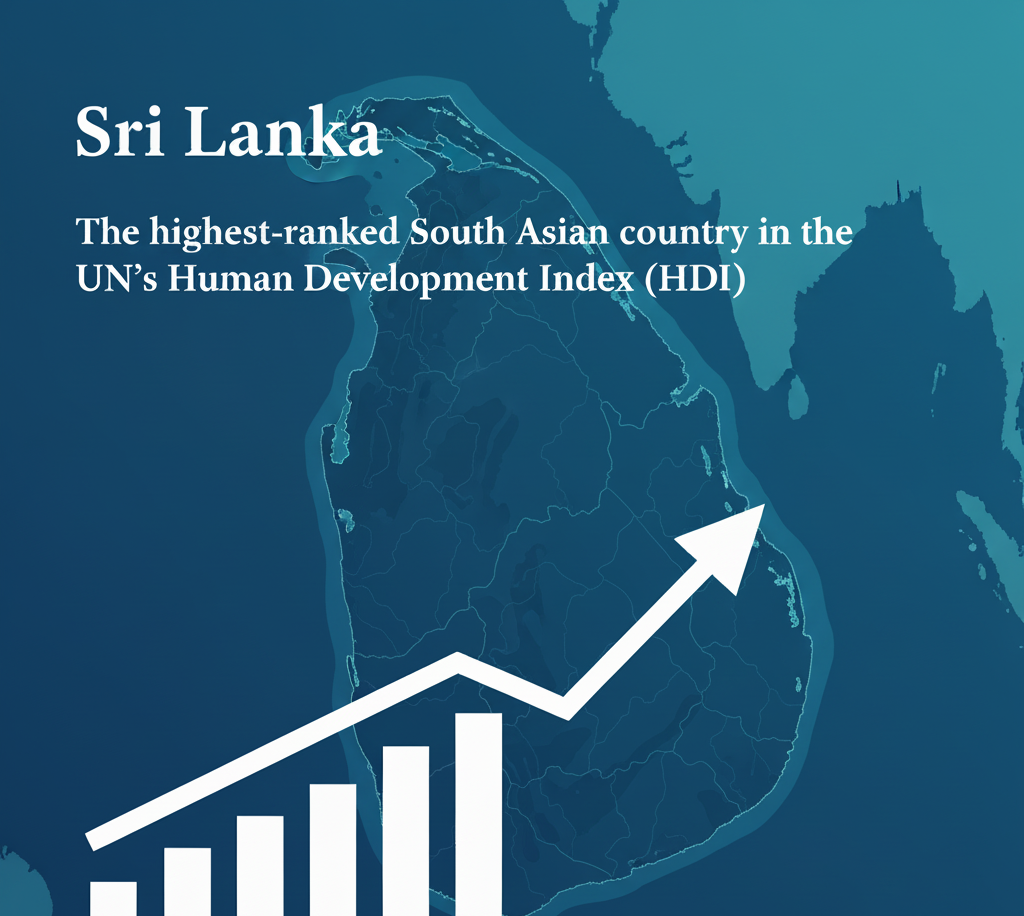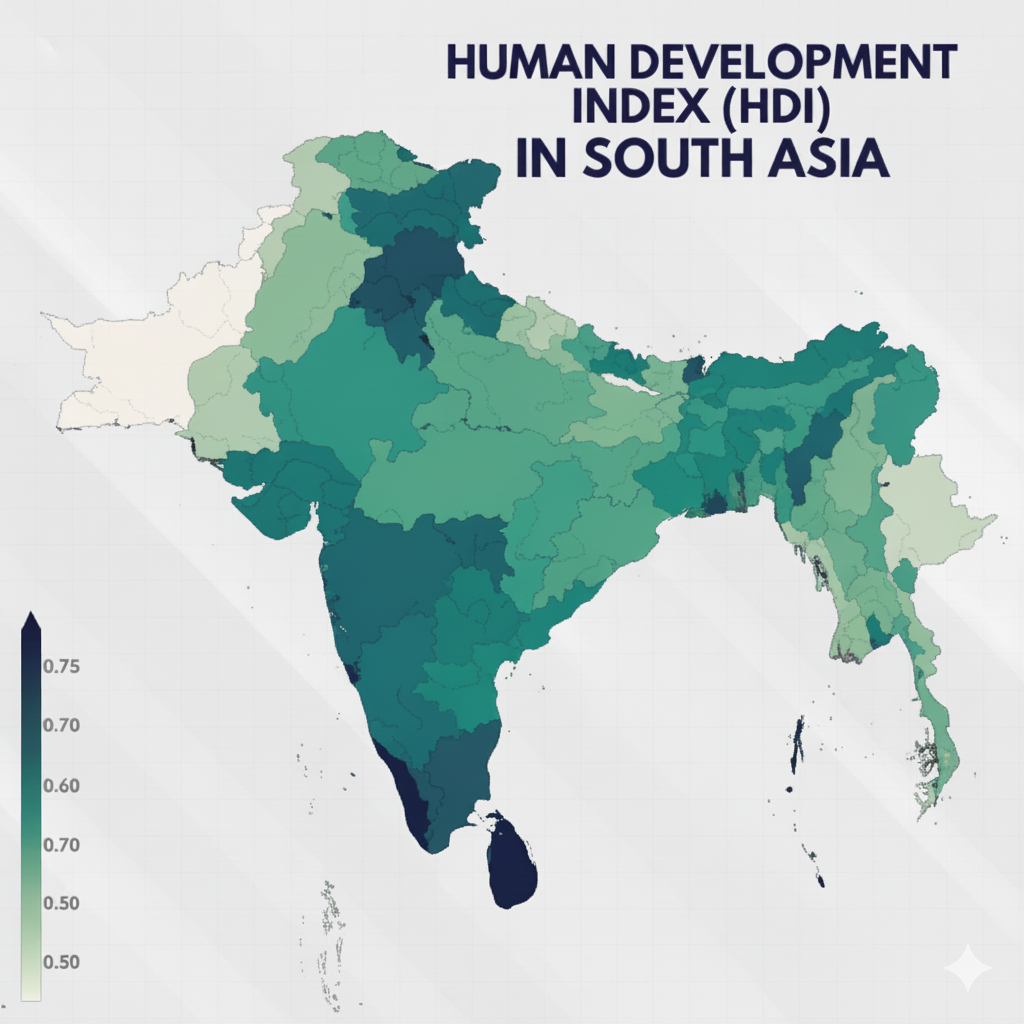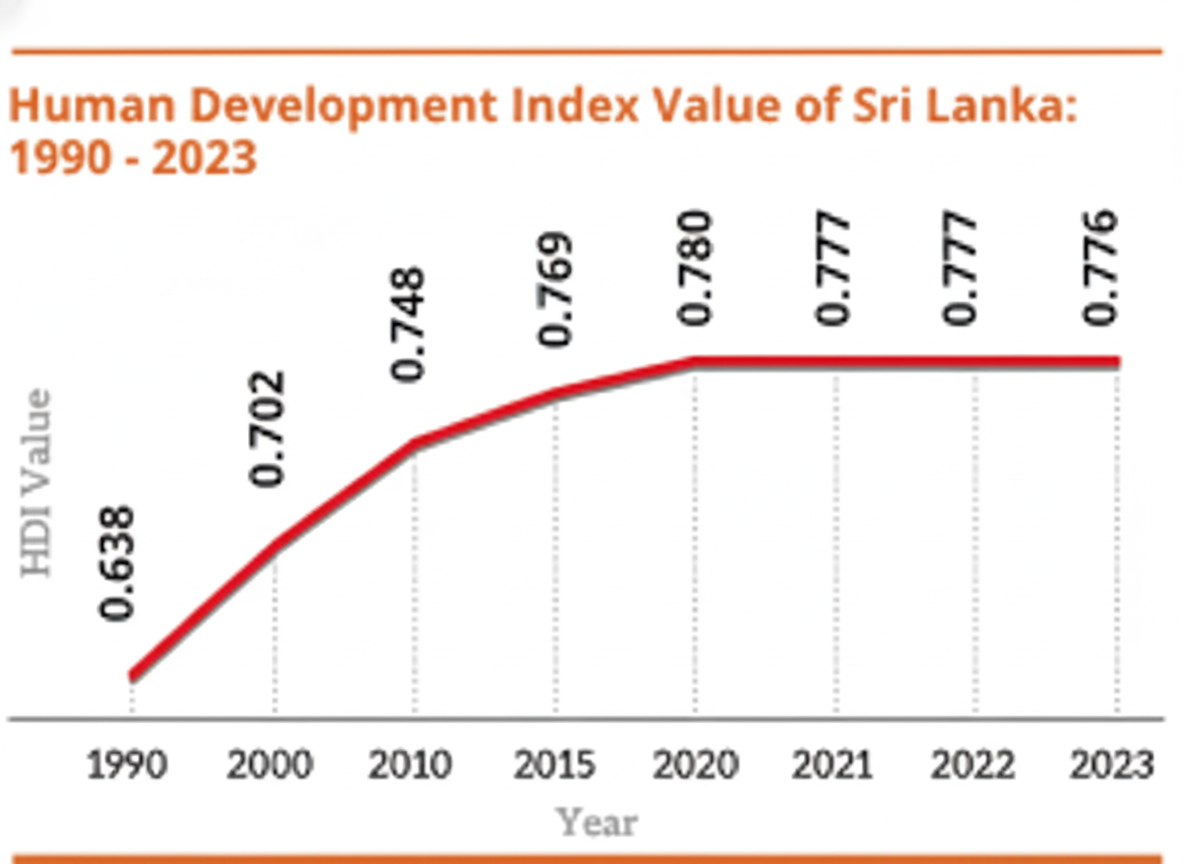
HDI Journey of Sri Lanka : Progress Beyond The Beauty
Sri Lanka often captivates the world with its natural beauty, proud history, and vibrant culture—but the nation’s appeal runs deeper. According to the most recent reports, Sri Lanka is the highest-ranked South Asian country in the UN’s Human Development Index (HDI), with a global rank of 89th among 193 countries. This is remarkable for a South Asian nation and highlights how much more there is to this island than just its beauty.

What Is HDI And Why It Matters
The Human Development Index (HDI) is a composite measure created by the United Nations Development Programme (UNDP) that captures a country’s average achievement in three fundamental dimensions:
- Health: Measured by life expectancy at birth.
- Education: Measured by a combination of adult literacy and gross school enrolment.
- Standard of Living: Measured by gross national income (GNI) per capita.
HDI is important because, rather than focusing solely on simple economic metrics like GDP, it provides a clearer picture of how well people are actually living—their access to health, education, and opportunities. It serves as a significant reminder that Sri Lanka’s progress is not just about sightseeing; it is built on real social development.
Sri Lanka’s Path to Its Current HDI (through 2025)
Over the past decades, Sri Lanka has made deliberate investments in social infrastructure that have boosted its HDI:
- Education Journey: The country has maintained access to free education for over a century, resulting in a high literacy rate and consistently strong enrollment in primary and secondary schools. According to its Public Investment Programme (2021–2024), net primary enrollment reached over 99%, and meaningful gains have been achieved in the education index.
- Health Investments: Sri Lanka has maintained a strong public health system, providing widespread access to essential medical services and achieving steady gains in life expectancy. According to recent reports, life expectancy is approaching 76–77 years.
- Income Gains: While Sri Lanka’s GNI per capita (PPP) has faced ups and downs there’s been a long-term upward trend that contributes to its HDI. Despite facing economic turbulence — especially in recent years — Sri Lanka has seen recovery efforts, including debt restructuring.

How HDI Has Influenced Sri Lanka
- Policy Direction: This HDI progressing journey has guided Sri Lanka’s national policies. By focusing on health, education, and living standards—not just money—Sri Lanka has built systems that improve people’s quality of life.
- International Image of the Country: A high HDI ranking shows travelers and investors that Sri Lanka has good social services and infrastructure, which can make the country more attractive and trustworthy choice.
- Social Equity: HDI highlights gaps in wealth and opportunity, encouraging public discussion about inequality, especially as some progress is threatened by rising income gaps and slower growth.
- Resilience: Even during economic crises in recent years, years of development in health and education give Sri Lanka a strong foundation to recover more steadily.
In Summary
Sri Lanka’s HDI is more than a statistic — it’s a mirror of the nation’s social progress, reflecting decades of investment in its people. While it may still face economic challenges and inequality, its standing in the “high human development” category underlines why Sri Lanka isn’t just a beautiful island to visit — it’s also a society that has built strong foundations for the future. At the same time, HDI reminds us that growth is not guaranteed; challenges still loom, and how Sri Lanka addresses them will shape its future.
